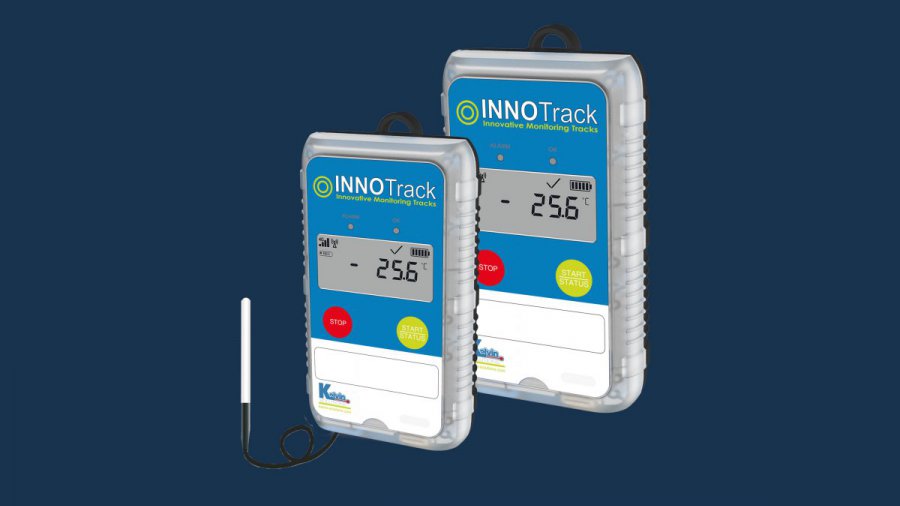The power of temperature logger monitoring: essential for optimal control
In the world of quality control, storage, and logistics, temperature monitoring plays a crucial role. A temperature logger for monitoring provides companies with the ability to accurately and continuously record temperature data, which is essential in industries such as the food industry, pharmaceuticals, and transportation.
At Innolabel, we understand the importance of reliable temperature logger monitoring. Our solutions help companies reduce risks, comply with regulations, and ensure the integrity of their products. In this article, we’ll guide you through the world of temperature logger monitoring and show you why this system is a must-have for any company that relies on temperature-sensitive processes.
What is a temperature logger for monitoring?
Temperature logger for monitoring is the process of continuously recording and checking temperature data using a temperature logger. These loggers are devices that measure the temperature with sensors and store the data in internal memory or transmit it via a network. They provide businesses with insights into temperature changes in real-time or over extended periods.
Key features of temperature logger monitoring include:
- Continuous monitoring: Always having insight into the temperature conditions of products or environments.
- Data recording: Detailed storage of temperature values for analysis.
- Real-time alerts: Alarms for deviations outside set limits.
- Advanced reporting: Compliance with regulations and process improvement.

The use of temperature logger for monitoring is widely applicable and essential in various industries. Below we discuss the most common industries where this technology is used.
Food industry:
Temperature plays a critical role in maintaining food quality and safety. With temperature logger monitoring, companies can: Verify that products remain within safe temperature limits during storage and transportation. Store data as proof of HACCP compliance. Prevent spoilage by intervening early when deviations occur.
Pharmaceuticals:
Medicines, vaccines and biological products are sensitive to temperature fluctuations. Temperature logger for monitoring is indispensable to ensure that the “cold chain” (cold chain) is not interrupted. Companies can use it to:
- Ensuring drug stability.
- Capture detailed data for audits and regulations such as GDP.
- Instant intervention in the event of temperature fluctuations thanks to alarms.
Transportation and logistics:
During the transportation of temperature-sensitive products, monitoring is very important to ensure the quality and safety of goods. Temperature loggers:
- Provide real-time visibility into temperature data during transport.
- Generate detailed reports for clients and audits.
- Prevent damage claims by documenting temperature anomalies.
Research and laboratories:
In laboratories and research facilities, temperature control is essential for reproducible results. Temperature logger for monitoring helps with:
- Accurately recording experimental conditions.
- Detecting abnormalities that may affect research results.
- Creating audit trail data for publications and regulators.
How does temperature logger for monitoring work?
The operation of temperature logger for monitoring is simple but highly effective. Below we describe the main steps of the process.
- Installation: The logger is placed in the environment you want to monitor, such as a cold storage room, transport vehicle or storage area.
- Configuration: Settings such as temperature limits and measurement intervals are set via software or an app.
- Logging: The logger continuously measures temperature and stores or sends this data to a central system.
- Warnings: If the temperature goes outside the set limits, an alarm is triggered. This can be done via email, text message or an app.
- Data analysis: collected data is analyzed to identify trends, generate reports and improve processes.

Benefits of a temperature logger for monitoring
Implementing temperature logger for monitoring offers numerous benefits for businesses. Let’s discuss some of the key benefits:
Real-time monitoring: Temperature loggers allow you to view temperature data at any time. This is essential to intervene immediately in case of anomalies, preventing damage to products.
Reliable data logging: Temperature loggers provide accurate measurements that can be easily stored and shared. This makes it easier to pass audits and comply with regulations.
Cost savings: By detecting deviations in temperature early, you avoid wasting products. This leads to fewer losses and lower operating costs.
Regulatory compliance: Many industries have strict regulations around temperature control. Temperature logger monitoring helps companies comply with standards such as HACCP, GDP and ISO standards.
Process improvement: The data collected by loggers can be used to analyze patterns and eliminate inefficiencies in storage and transportation.
Why choose temperature logger monitoring from Innolabel?
At Innolabel, we offer solutions that meet the highest quality standards. Our monitoring temperature loggers are designed with reliability, ease of use and durability in mind.
What makes us unique?
- Advanced technology: Our loggers provide accurate measurements and real-time alerts.
- Durability: Our products withstand shock, vibration and extreme conditions.
- Usability: Easy installation and intuitive data management software.
- Excellent Support: Our team is ready to help you with installation, maintenance and questions.

Future of temperature logger for monitoring
The technology behind temperature loggers for monitoring continues to evolve. Innovations such as Internet of Things, wireless networks and artificial intelligence are improving the capabilities of these systems. Companies can benefit in the future from:
- Full automation: Loggers that communicate directly with other systems.
- Predictive analytics: Recognize patterns to predict anomalies before they occur.
- Eco-friendliness: Energy-efficient appliances that reduce carbon footprint
At Innolabel, we continue to evolve our products to meet the changing needs of our customers.


